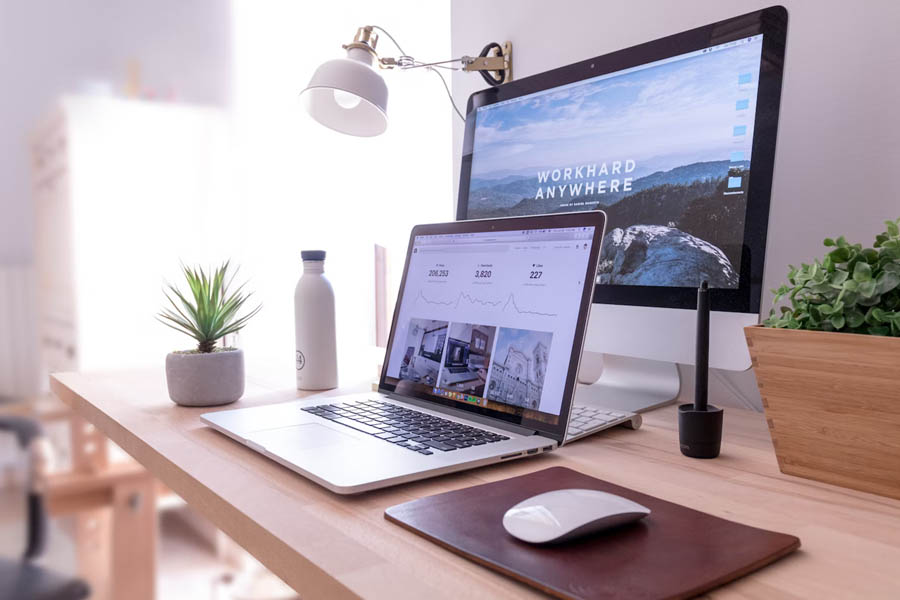
Working from home has become a new reality for many of us, and designing a functional and appealing home office space has never been more important. When setting up your workspace, consider these expert tips to create a productive and comfortable environment that suits your needs.
Desk Placement for Openness and Efficiency
Traditional desk placement facing a wall can feel confining and limiting. Consider positioning your desk perpendicular to a wall or window or floating it in the room, facing the door. This arrangement provides a sense of openness and allows you to be aware of who's entering the room. In addition, if possible, place your desk where you can enjoy an outdoor view, as it can boost productivity and reduce stress. However, be mindful of sun glare and use window treatments if needed.
Space and Rug Planning
To ensure easy movement in your workspace, leave at least 3 feet of space between the edge of your desk and the closest obstacle, whether it's a wall, window, or furniture. Opt for a carpet that accommodates both your chair and your desk's legs comfortably. Low-pile rugs are practical and easy to navigate.
Create a Relaxation Zone
If you have enough space, consider adding a separate seating area where you can brainstorm ideas or take a break. A comfortable chair or sofa can serve this purpose. In some cases, it can even double as a spot for your pets to relax, keeping them from interrupting your calls and meetings.
Layered Lighting
Create a well-lit workspace by layering different sources of light. Overhead lighting alone can feel harsh and corporate. Supplement your main lighting with floor lamps, task lamps, or wall-mounted, pivoting task lights. This approach allows you to adjust the lighting to your needs, especially during video meetings when you want to look your best.
Choose the Right Desk Dimensions
The size and dimensions of your desk should align with your work requirements. Standard table height falls between 28 and 30 inches, but your specific work needs might dictate the ideal depth and width. For instance, a desktop computer setup generally requires a minimum of 36 inches of depth. However, if you primarily work on a laptop, a 24-inch depth might suffice. Avoid desks with under-table drawers, as insufficient kneehole space can be frustrating.
When setting up your desk, consider ergonomics to ensure comfort during long work hours. Your elbows should form a 90-degree angle, your hips should also be at 90 degrees, and your knees should be at 90 degrees when your feet are flat on the floor. This guideline promotes proper posture and minimizes strain. If you're using a chair without proper lumbar support, consider adding a backrest or cushion. Raising your computer to eye level using books or a stand can also help maintain good posture. By incorporating these expert recommendations into your home office design, you can create a workspace that promotes productivity, comfort, and a sense of openness. Tailor your setup to your specific needs and preferences to make working from home a more enjoyable and efficient experience.